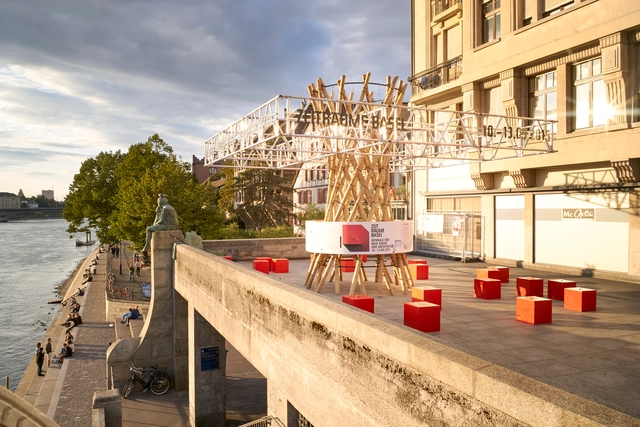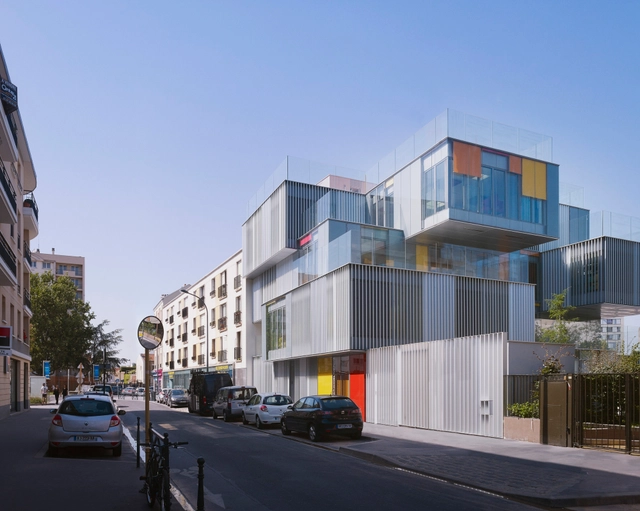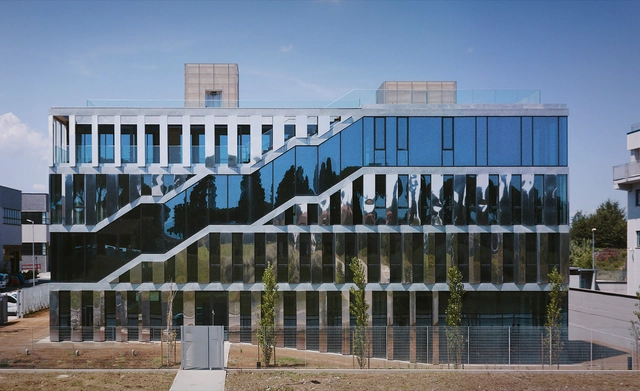Julien_LANOO_20150322_21877.jpg?1446924600&format=webp&width=640&height=580)
-
Architects: a+ samueldelmas
- Area: 2800 m²
-
Professionals: a+ samueldelmas, Charier
If you want to make the best of your experience on our site, sign-up.

If you want to make the best of your experience on our site, sign-up.

Julien_LANOO_20150322_21877.jpg?1446924600&format=webp&width=640&height=580)


HHF architects has created a temporary pavilion for the first biennial for contemporary music and architecture ZeitRäume in Basel, Switzerland.
At nearly six meters tall, the installation is constructed of simple parts: “a large drum made of bamboo poles, with a roof of scaffolding brackets.” While seemingly basic in construction, the pavilion additionally features movement in the roof portion, when blown by the wind.


Established in 2004, Spanish studio Barozzi/Veiga have become known for their intellectual approach to design and their precise solutions which draw on both local conditions and a sense of uniqueness - an approach which recently won them the Mies van der Rohe Award for their Philharmonic Hall Szczecin. In this interview, originally published in the August issue of Indian Architect & Builder under the title "Script of Simplicity," Fabrizio Barozzi speaks about the award-winning Philharmonic Hall Szczecin, the connection Barozzi/Veiga keeps between research and design, and how they avoid the generic in their architecture.
Indian Architect & Builder: Tell us a little about Barozzi/Veiga; the ideas, principles and core philosophies of your practice.
Fabrizio Barozzi: We always try to create an "essential" architecture. We understand essential architecture as a public architecture, an architecture that intends to generate some positive changes in the community for which it is built. An architecture that arises in a context without harshness, specific and inspired by its environment. We believe that this kind of approach to architecture is what brings out the characteristics of each site and therefore the diversity of ideas that exist in the world.







Having an office with a view may be more than just a symbol of seniority. New findings show that there are public health benefits associated with working by a window, Fast Co Design reports. An interdisciplinary group of architects and medical researchers compared workers exposed to natural light with those who aren’t, and found that window workers sleep, on average, 46 minutes more a night. They also scored better on self-report health and sleep surveys. Learn more about the study in the full article, “Workers in Windowless Offices Lose 46 Minutes of Sleep a Night,” at Fast Co Design and start convincing your boss that it’s time you had a window office!

